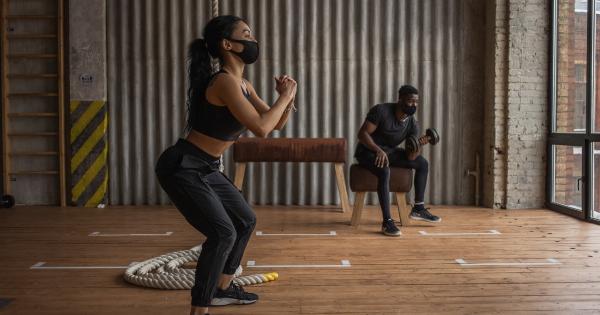Exercise plays a vital role in maintaining overall health and well-being. It not only helps in reducing weight and improving cardiovascular fitness, but it also strengthens the bones and muscles.
Regular physical activity can be particularly beneficial for individuals at risk of developing osteoporosis, a condition characterized by weak and fragile bones. In this article, we will explore the importance of exercise in preventing and managing osteoporosis.
Understanding Osteoporosis
Osteoporosis is a skeletal disorder that weakens the bones and makes them more susceptible to fractures. It occurs when the body loses too much bone mass or fails to produce adequate bone tissue.
Osteoporosis is often referred to as a “silent disease” because it progresses silently without any symptoms until a bone fracture occurs. The most common sites for fractures due to osteoporosis are the hip, spine, and wrist.
Exercise and Bone Health
Regular exercise is crucial for maintaining bone health. Weight-bearing exercises, which involve working against gravity, are particularly effective in improving bone strength. These exercises stimulate the bones to rebuild and become denser.
Some examples of weight-bearing exercises include brisk walking, jogging, dancing, and stair climbing.
Resistance or strength training exercises also play a significant role in preventing osteoporosis. These exercises involve working against resistance such as lifting weights or using resistance bands.
Resistance training not only strengthens the muscles but also puts stress on the bones, promoting bone growth and increasing bone mineral density.
The Benefits of Exercise for Osteoporosis
Engaging in regular exercise offers numerous benefits for individuals with osteoporosis:.
1. Improved Bone Density
Exercise helps increase bone mineral density, which is crucial for preventing fractures. Weight-bearing exercises and resistance training stimulate bone formation and slow down bone loss, leading to improved bone density and strength.
2. Enhanced Muscle Strength
Strong muscles provide support to the bones and reduce the risk of falls and fractures. Exercise, especially resistance training, helps build and maintain muscle strength, improving balance and stability.
3. Better Posture
Osteoporosis can lead to a stooped or hunched posture due to vertebral fractures. Exercise, particularly exercises that target the back and core muscles, can help improve posture and reduce the risk of spinal compression fractures.
4. Increased Flexibility and Range of Motion
Regular exercise, including stretching and flexibility exercises, can help improve joint flexibility and range of motion. This can enhance mobility and reduce the risk of falls and fractures.
5. Reduced Falls
Falls are a significant concern for individuals with osteoporosis. Exercise helps improve balance, coordination, and muscle strength, reducing the risk of falls.
Engaging in activities that improve balance, such as Tai Chi, can be particularly beneficial.
Exercise Recommendations for Osteoporosis
Before starting any exercise regimen, it is essential to consult with a healthcare professional, especially for individuals with existing medical conditions or those who haven’t been active for a long time.
The recommendations may vary depending on an individual’s overall health, age, and current fitness level. However, some general exercise guidelines for osteoporosis management include:.
1. Weight-Bearing Exercises
Engaging in weight-bearing exercises for at least 30 minutes most days of the week is recommended. Activities such as walking, jogging, dancing, hiking, or stair climbing can be included in the routine.
2. Resistance Training
Add resistance training exercises two to three times a week, targeting major muscle groups. This can involve lifting weights, using resistance bands, or using weight machines at the gym under proper guidance.
3. Balance and Posture Exercises
Incorporate exercises that improve balance and posture, such as standing on one leg, heel-to-toe walk, or yoga. These exercises can help prevent falls and improve overall stability.
4. Flexibility and Stretching Exercises
Perform flexibility exercises regularly to improve joint mobility and prevent stiffness. Simple stretches for all major muscle groups can be included in the exercise routine.
5. Low-Impact Exercises
Include low-impact aerobic exercises, such as swimming or cycling, to provide cardiovascular benefits without putting excessive strain on the joints.
Lifestyle Modifications for Osteoporosis
In addition to regular exercise, certain lifestyle habits can have a positive impact on bone health and overall well-being:.
1. Maintain a Balanced Diet
Ensure adequate intake of calcium and vitamin D through a balanced diet or supplements, if necessary. Calcium-rich foods include dairy products, leafy greens, and fortified foods. Exposure to sunlight helps the body produce vitamin D naturally.
2. Avoid Smoking and Excessive Alcohol Consumption
Smoking and excessive alcohol consumption can accelerate bone loss and weaken the bones. Quitting smoking and limiting alcohol intake can help protect bone health.
3. Fall Prevention
Take precautions to prevent falls by keeping the living environment safe and clutter-free. Use assistive devices if necessary, such as handrails, grab bars, or non-slip mats.
4. Regular Bone Density Check-ups
It is advisable to undergo regular bone density tests to monitor bone health and assess the effectiveness of lifestyle modifications and treatment options.
Conclusion
Exercise plays a key role in preventing and managing osteoporosis. Regular physical activity, especially weight-bearing exercises and resistance training, can enhance bone density, muscle strength, flexibility, and balance.
It is crucial to consult with healthcare professionals and follow personalized exercise recommendations. By staying active and adopting a healthy lifestyle, individuals can reduce the risk of fractures, improve overall well-being, and maintain strong and healthy bones throughout their lives.






























